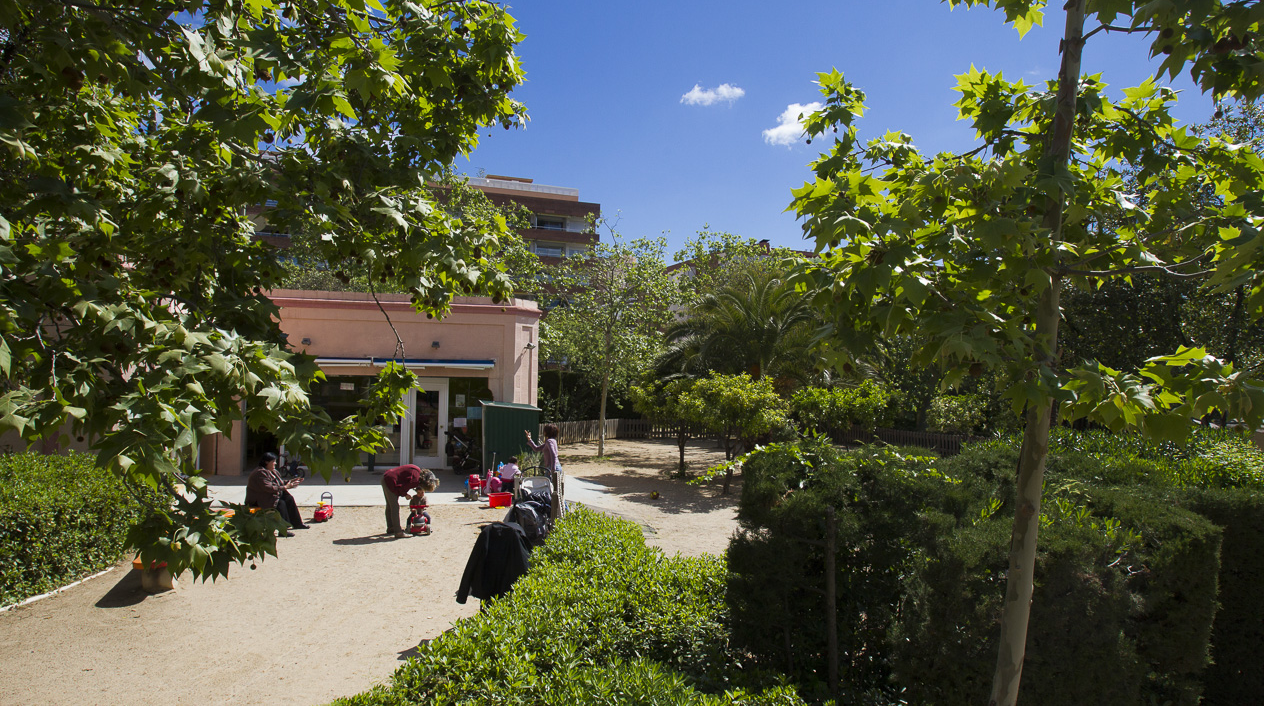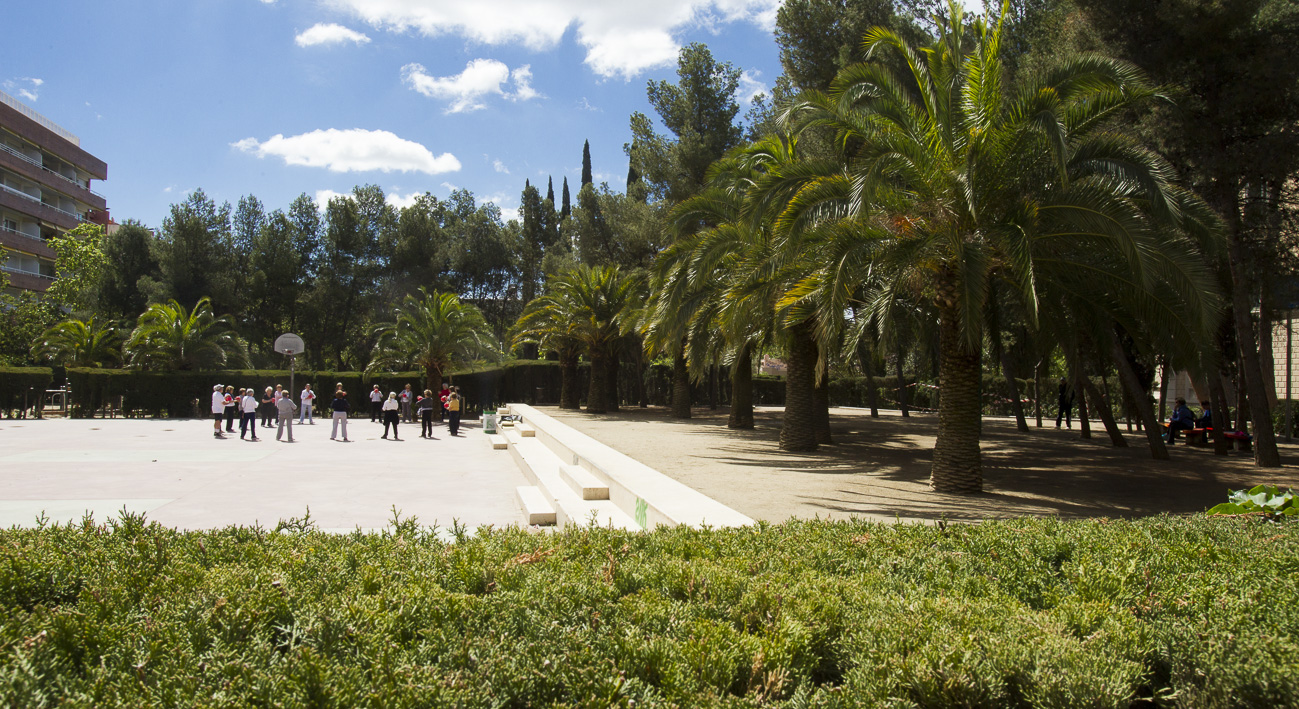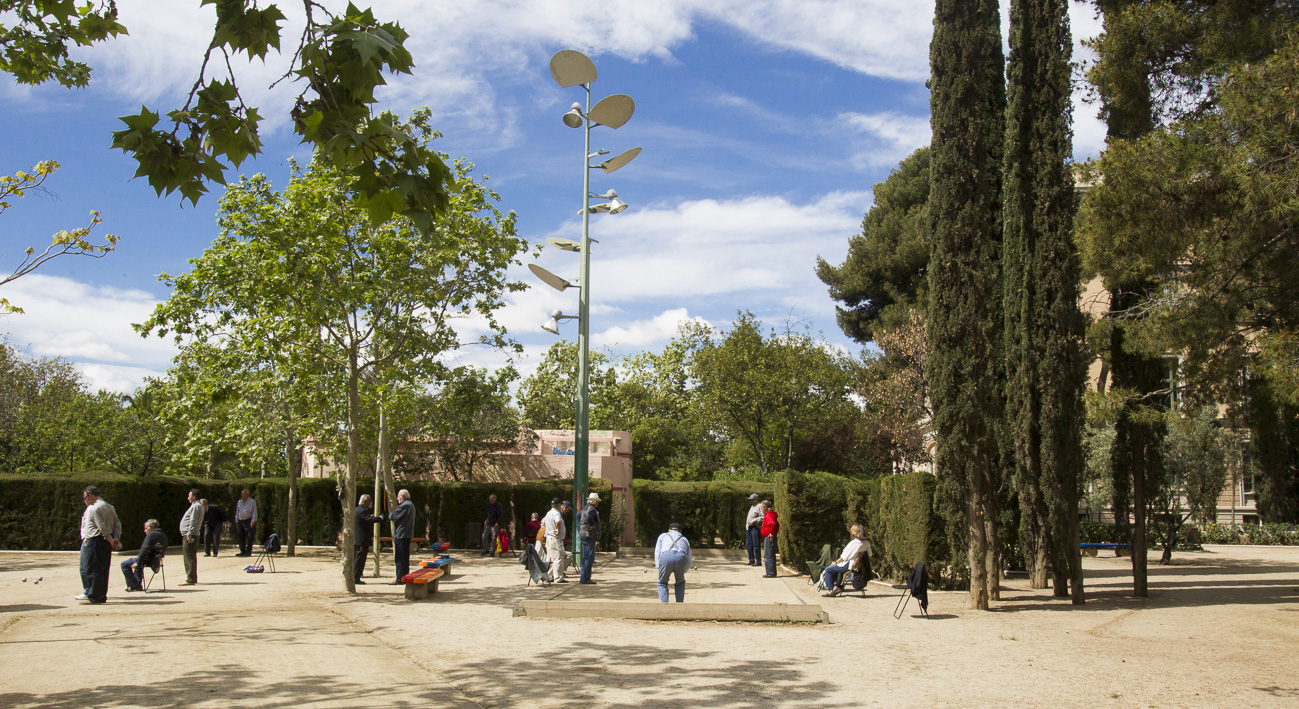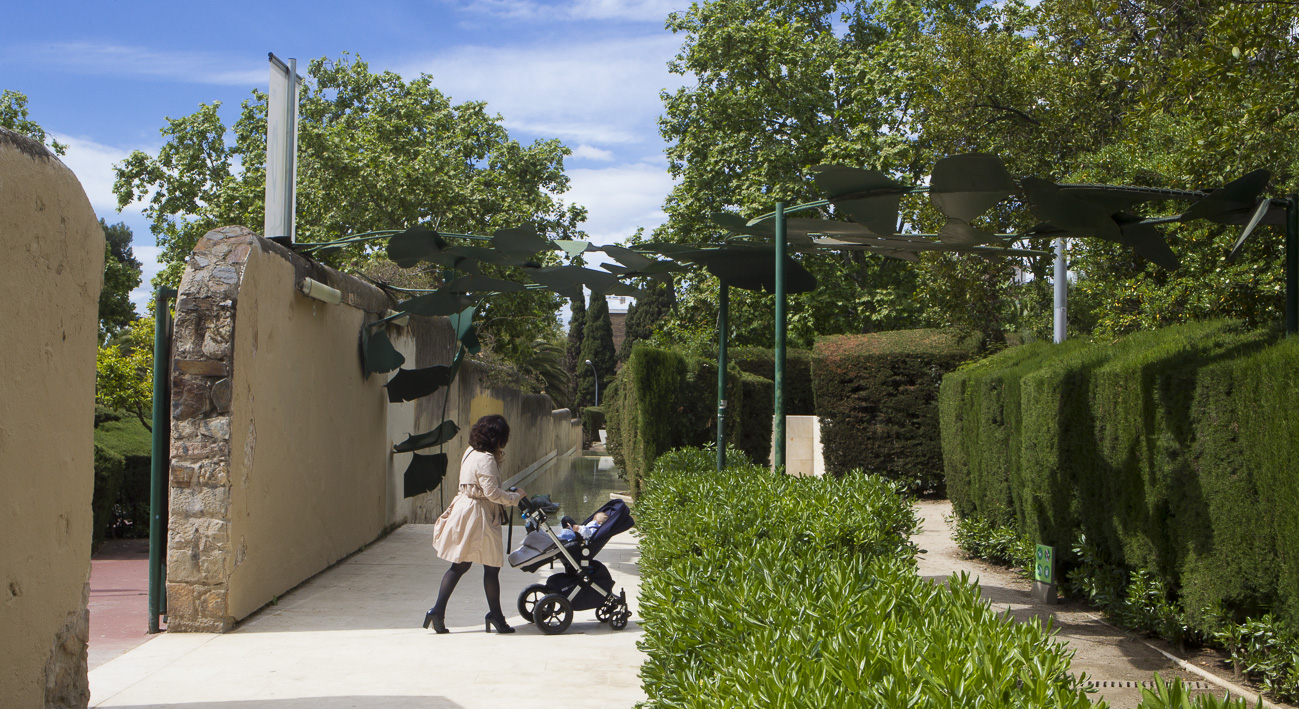Tall and dense cypress hedges make up the gardens’ antechamber. Once inside, visitors are greeted by the ill-fortuned Ophelia lying in a water channel, to the left of the green “wall”. On the right you will see a path with flights of steps that lead into the gardens. There is a path in front that also gives access to the gardens, in this case, to the central part: a circular square with the Casal de Sarrià Civic Centre building in the background. Rows of stunning trees and very old palms stretch from one side to the other.

History
The Vil·la Cecília Gardens are located on the land of an old rural estate, Cal Noyu, which was purchased in 1909 by Eduardo Conde, the founder of the El Siglo department store, the first of its kind established in Barcelona. Conde named the villa Cecília after his wife. The land was taken over by the City Council in 1969 and turned into a park.
Part of today’s green space used to belong to the old Vil·la Amèlia Gardens, which are located right next to it and are now for public use. The building, Eduardo Conde’s former residence, now houses the Casal de Sarrià Civic Centre.

Biodiversity
Aleppo and stone pines (Pinus halepensis and pinea), cypresses (Cupresus sempervirens) and Canary Island date palms (Phoenix canariensis) are but a few examples.
Other notable trees include plane trees (Platanus hispanica), lime trees (Tilia x europaea), cedars (Cedrus deodara), peppercorn trees (Schinus molle), Siberian elms
(Ulmus pumila) and trees of heaven (Ailanthus altissima). The civic centre is by a jelly palm Butia capitata, a tree rarely found in Barcelona. As for shrubs, it is the sweet bays (Laurus nobilis) that stand out.
The gardens have cabin-shaped cypress hedges. A small village of vegetation that starts from C/ Santa Amèlia and ends at the square that the civic centre stands on.
Open spaces and grass parterres sit side by side in a labyrinthine structure, with shaded paths and peaceful spots for sitting in. By way of a contrast, there is a tarmac surface at one end, dominated by a small palm grove.

Art and Architecture
A bronze statue made by Francisco López Hernández in 1964, depicting a drowned Ofèlia (Ophelia), lies face down in the water channel that begins to the right of the C/ Santa Amèlia entrance. Here several large metallic leaves of a maidenhair tree (Ginkgo biloba) join together in a kind of arch which greets visitors as it climbs up from the channel. It was designed by the architects who redeveloped the gardens: Elías Torres and José Antonio Martínez Lapeña.
They also designed the park’s wood-over-stone-wheel benches recalling skates and very tall lamps inspired by trees. Two design elements that won a FAD decorative arts prize in 1986.
Another of the park’s attractions is that it is designed for older people. There is a recreational area where they can exercise their joints and improve their agility with bars at various heights, loops for getting fingers moving and gentle ramps, among other things, exercise that enriches their daily walks.
-
- Phone number
- Tel.: 010
-
- Titularity
- Public center
- Address:
- Santa Amèlia, 1
- Districte:
- Sarrià-Sant Gervasi
- Neighborhood:
- Sarrià
- City:
- Barcelona
Timetable
| Periode | Dies | Hores | |
|---|---|---|---|
| de l'1 de novembre al 31 de març |
Tots els dies | de 10:00 h a 19:00 h | |
| de l'1 d'abril al 31 d'octubre |
Tots els dies | de 10:00 h a 21:00 h |
Hora de tancament
aproximada, en funció de
l'horari solar (tanquen
quan es fa fosc, al capvespre)
Esdeveniments
-
Exposició "15 anys de Llençart"
From 08/04/2024 to 29/06/2024
-
Grup de Petanca del Jardí de Vil·la Cecília
Permanent event






